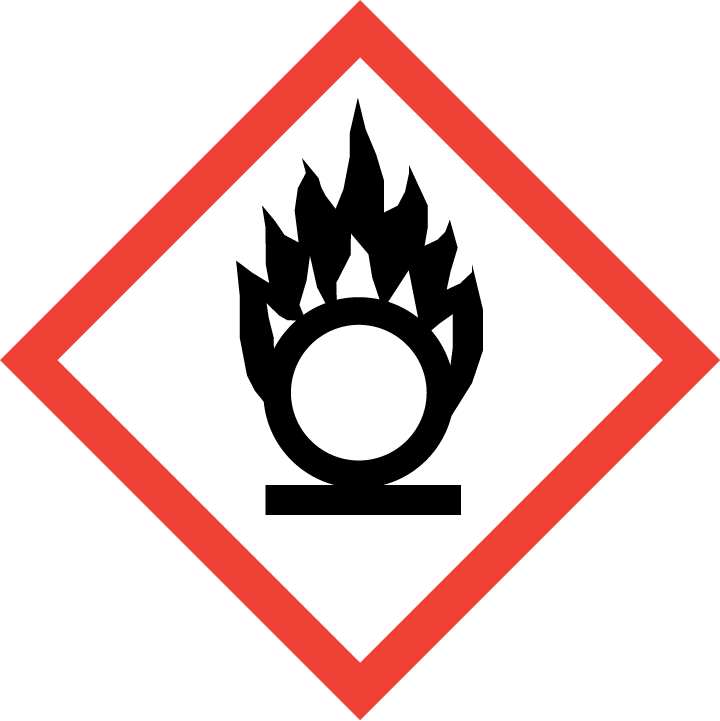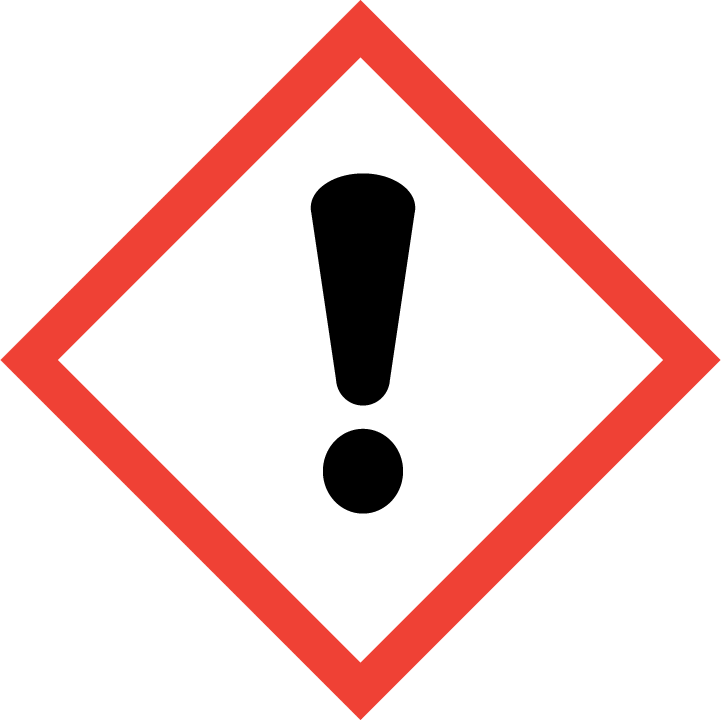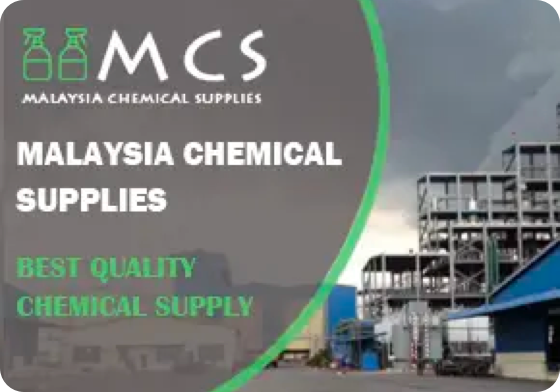1.Identification
1.1 GHS Product identifier
| Product name | ammonium nitrate |
|---|
1.2 Other means of identification
| Product number | - |
|---|---|
| Other names | Ammonium nitrate |
1.3 Recommended use of the chemical and restrictions on use
| Identified uses | For industry use only. Agricultural chemicals (non-pesticidal),Intermediates,Odor agents,Oxidizing/reducing agents,Propellants and blowing agents |
|---|---|
| Uses advised against | no data available |
1.4 Supplier's details
| Company | MOLBASE (Shanghai) Biotechnology Co., Ltd. |
|---|---|
| Address | Floor 4 & 5, Building 12, No. 1001 North Qinzhou Road, Xuhui District, Shanghai, China |
| Telephone | +86(21)64956998 |
| Fax | +86(21)54365166 |
1.5 Emergency phone number
| Emergency phone number | +86-400-6021-666 |
|---|---|
| Service hours | Monday to Friday, 9am-5pm (Standard time zone: UTC/GMT +8 hours). |
2.Hazard identification
2.1 Classification of the substance or mixture
Oxidizing solids, Category 3
Eye irritation, Category 2
2.2 GHS label elements, including precautionary statements
| Pictogram(s) |   |
|---|---|
| Signal word | Warning |
| Hazard statement(s) | H272 May intensify fire; oxidizer H319 Causes serious eye irritation |
| Precautionary statement(s) | |
| Prevention | P210 Keep away from heat, hot surfaces, sparks, open flames and other ignition sources. No smoking. P220 Keep away from clothing and other combustible materials. P280 Wear protective gloves/protective clothing/eye protection/face protection. P264 Wash ... thoroughly after handling. |
| Response | P370+P378 In case of fire: Use ... to extinguish. P305+P351+P338 IF IN EYES: Rinse cautiously with water for several minutes. Remove contact lenses, if present and easy to do. Continue rinsing. P337+P313 If eye irritation persists: Get medical advice/attention. |
| Storage | none |
| Disposal | P501 Dispose of contents/container to ... |
2.3 Other hazards which do not result in classification
none
3.Composition/information on ingredients
3.1 Substances
| Chemical name | Common names and synonyms | CAS number | EC number | Concentration |
|---|---|---|---|---|
| ammonium nitrate | ammonium nitrate | 6484-52-2 | none | 100% |
4.First-aid measures
4.1 Description of necessary first-aid measures
General advice
Consult a physician. Show this safety data sheet to the doctor in attendance.
If inhaled
Fresh air, rest. Seek medical attention if you feel unwell.
In case of skin contact
Rinse skin with plenty of water or shower. Remove contaminated clothes.
In case of eye contact
First rinse with plenty of water for several minutes (remove contact lenses if easily possible), then refer for medical attention.
If swallowed
Rinse mouth. Refer for medical attention .
4.2 Most important symptoms/effects, acute and delayed
Excerpt from ERG Guide 140 [Oxidizers]: Inhalation, ingestion or contact (skin, eyes) with vapors or substance may cause severe injury, burns or death. Fire may produce irritating, corrosive and/or toxic gases. Runoff from fire control or dilution water may cause pollution. (ERG, 2016)
Excerpt from ERG Guide 140 [Oxidizers]: Inhalation, ingestion or contact (skin, eyes) with vapors or substance may cause severe injury, burns or death. Fire may produce irritating, corrosive and/or toxic gases. Runoff from fire control or dilution water may cause pollution. (ERG, 2016)
Excerpt from ERG Guide 140 [Oxidizers]: Inhalation, ingestion or contact (skin, eyes) with vapors or substance may cause severe injury, burns or death. Fire may produce irritating, corrosive and/or toxic gases. Runoff from fire control or dilution water may cause pollution. (ERG, 2016)
Excerpt from ERG Guide 140 [Oxidizers]: Inhalation, ingestion or contact (skin, eyes) with vapors or substance may cause severe injury, burns or death. Fire may produce irritating, corrosive and/or toxic gases. Runoff from fire control or dilution water may cause pollution. (ERG, 2016)
Excerpt from ERG Guide 112 [Explosives* - Division 1.1, 1.2, 1.3 or 1.5]: Fire may produce irritating, corrosive and/or toxic gases. (ERG, 2016)
Liquid irritates eyes, particularly those grades that contain a little free ammonia. (USCG, 1999)
4.3 Indication of immediate medical attention and special treatment needed, if necessary
Emergency and Supportive Measures: Maintain an open airway and assist ventilation if necessary. Administer supplemental oxygen. Treat hypotension with supine positioning, intravenous crystalloid fluids, and low-dose pressors if needed. Monitor vital signs and ECG for 4-6 hours. /Nitrates and nitrites/
5.Fire-fighting measures
5.1 Extinguishing media
Suitable extinguishing media
Cool exposed containers with water. Continue cooling after fire has been extinguished.
5.2 Specific hazards arising from the chemical
Excerpt from ERG Guide 140 [Oxidizers]: These substances will accelerate burning when involved in a fire. Some may decompose explosively when heated or involved in a fire. May explode from heat or contamination. Some will react explosively with hydrocarbons (fuels). May ignite combustibles (wood, paper, oil, clothing, etc.). Containers may explode when heated. Runoff may create fire or explosion hazard. (ERG, 2016)
Excerpt from ERG Guide 140 [Oxidizers]: These substances will accelerate burning when involved in a fire. Some may decompose explosively when heated or involved in a fire. May explode from heat or contamination. Some will react explosively with hydrocarbons (fuels). May ignite combustibles (wood, paper, oil, clothing, etc.). Containers may explode when heated. Runoff may create fire or explosion hazard. (ERG, 2016)
Excerpt from ERG Guide 140 [Oxidizers]: These substances will accelerate burning when involved in a fire. Some may decompose explosively when heated or involved in a fire. May explode from heat or contamination. Some will react explosively with hydrocarbons (fuels). May ignite combustibles (wood, paper, oil, clothing, etc.). Containers may explode when heated. Runoff may create fire or explosion hazard. (ERG, 2016)
Excerpt from ERG Guide 140 [Oxidizers]: These substances will accelerate burning when involved in a fire. Some may decompose explosively when heated or involved in a fire. May explode from heat or contamination. Some will react explosively with hydrocarbons (fuels). May ignite combustibles (wood, paper, oil, clothing, etc.). Containers may explode when heated. Runoff may create fire or explosion hazard. (ERG, 2016)
Excerpt from ERG Guide 112 [Explosives* - Division 1.1, 1.2, 1.3 or 1.5]: MAY EXPLODE AND THROW FRAGMENTS 1600 METERS (1 MILE) OR MORE IF FIRE REACHES CARGO. For information on "Compatibility Group" letters, refer to Glossary section. (ERG, 2016)
Behavior in Fire: Water of solution may evaporate, and remaining solids may then explode. (USCG, 1999)
5.3 Special protective actions for fire-fighters
Wear self-contained breathing apparatus for firefighting if necessary.
6.Accidental release measures
6.1 Personal precautions, protective equipment and emergency procedures
Use personal protective equipment. Avoid dust formation. Avoid breathing vapours, mist or gas. Ensure adequate ventilation. Evacuate personnel to safe areas. Avoid breathing dust. For personal protection see section 8.
6.2 Environmental precautions
Personal protection: particulate filter respirator adapted to the airborne concentration of the substance. Sweep spilled substance into covered non-combustible containers. Store and dispose of according to local regulations. Wash away remainder with plenty of water.
6.3 Methods and materials for containment and cleaning up
Prompt cleanup and removal are necessary in order to prevent contamination with combustible materials.
7.Handling and storage
7.1 Precautions for safe handling
Avoid contact with skin and eyes. Avoid formation of dust and aerosols. Avoid exposure - obtain special instructions before use.Provide appropriate exhaust ventilation at places where dust is formed. For precautions see section 2.2.
7.2 Conditions for safe storage, including any incompatibilities
Separated from combustible substances and reducing agents. Dry. Well closed.Closed containers may rupture violently when heated.
8.Exposure controls/personal protection
8.1 Control parameters
Occupational Exposure limit values
no data available
Biological limit values
no data available
8.2 Appropriate engineering controls
Handle in accordance with good industrial hygiene and safety practice. Wash hands before breaks and at the end of workday.
8.3 Individual protection measures, such as personal protective equipment (PPE)
Eye/face protection
Safety glasses with side-shields conforming to EN166. Use equipment for eye protection tested and approved under appropriate government standards such as NIOSH (US) or EN 166(EU).
Skin protection
Wear impervious clothing. The type of protective equipment must be selected according to the concentration and amount of the dangerous substance at the specific workplace. Handle with gloves. Gloves must be inspected prior to use. Use proper glove removal technique(without touching glove's outer surface) to avoid skin contact with this product. Dispose of contaminated gloves after use in accordance with applicable laws and good laboratory practices. Wash and dry hands. The selected protective gloves have to satisfy the specifications of EU Directive 89/686/EEC and the standard EN 374 derived from it.
Respiratory protection
Wear dust mask when handling large quantities.
Thermal hazards
no data available
9.Physical and chemical properties
| Physical state | White crystals, odorless, hygroscopic, deliquescent. |
|---|---|
| Colour | White hygroscopic crystals; orthorhombic |
| Odour | Odorless |
| Melting point/ freezing point | 169ºC |
| Boiling point or initial boiling point and boiling range | 210ºC |
| Flammability | Not combustible but enhances combustion of other substances. Gives off irritating or toxic fumes (or gases) in a fire. |
| Lower and upper explosion limit / flammability limit | no data available |
| Flash point | 210ºC |
| Auto-ignition temperature | Not flammable (USCG, 1999) |
| Decomposition temperature | > 210°C |
| pH | 0.1 M solution in water: 5.43 |
| Kinematic viscosity | no data available |
| Solubility | In water:190 g/100 mL (20 ºC) |
| Partition coefficient n-octanol/water (log value) | no data available |
| Vapour pressure | 2.3 kPa at 20°C in water solution; 1.5 kPa at 20°C in saturated NH4NOs solution |
| Density and/or relative density | 1.725 |
| Relative vapour density | no data available |
| Particle characteristics | no data available |
10.Stability and reactivity
10.1 Reactivity
no data available
10.2 Chemical stability
Stability during transport: If heated strongly, decomposes, giving off toxic gases and gases which support combustion. Undergoes detonation if heated under confinement.
10.3 Possibility of hazardous reactions
AMMONIUM NITRATE is a strong oxidizing agent. Intimate ontact with combustible materials creates a fire or explosion hazard. Closed containers may rupture violently or detonate if heated. May detonate if subjected to strong shocks, such as from an explosion. Ammonium nitrate of any grade, including fertilizer grade should be considered, especially when mixed with oil, charcoal, or other organic materials, an explosive capable of detonation by the combustion or explosion of adjacent materials. Emits oxides of nitrogen and ammonia when heated to decomposition.
10.4 Conditions to avoid
no data available
10.5 Incompatible materials
With ammonium chloride, (barium nitrate), water, zinc: Addition of water to an intimate mixture of zinc powder and the salts causes spontaneous ignition and a mixture of ammonium nitrate and ammonium chloride...sprinkled with zinc dust ignites vigorously when moistened.
10.6 Hazardous decomposition products
Decomposes @ 210°C, with evolution of nitrous oxide.
11.Toxicological information
Acute toxicity
- Oral: LD50 Rat oral 2217 mg/kg bw
- Inhalation: LC50 Rat inhalation >88.8 mg/L/4 hr
- Dermal: no data available
Skin corrosion/irritation
no data available
Serious eye damage/irritation
no data available
Respiratory or skin sensitization
no data available
Germ cell mutagenicity
no data available
Carcinogenicity
no data available
Reproductive toxicity
no data available
STOT-single exposure
no data available
STOT-repeated exposure
no data available
Aspiration hazard
no data available
12.Ecological information
12.1 Toxicity
- Toxicity to fish: LC50; Species: /Oncorhynchus mykiss (Rainbow trout)/ 6000 mg/L for 96 hr /Conditions of bioassay not specified
- Toxicity to daphnia and other aquatic invertebrates: EC50; Species: Daphnia magna (Water flea); Conditions: freshwater, static; Concentration: 555000 ug/L for 24 hr; Effect: behavior, equilibrium /formulated product
- Toxicity to algae: no data available
- Toxicity to microorganisms: no data available
12.2 Persistence and degradability
Ammonium nitrate will be taken up by bacteria. Nitrate is more persistent in water than /the/ ammonium ion; nitrate degradation is fastest in anaerobic conditions.
12.3 Bioaccumulative potential
no data available
12.4 Mobility in soil
When spilled on soil, the liquid form of ammonium nitrate will spread on the surface and penetrate into the soil at a rate dependent on the soil type and its water content.
12.5 Other adverse effects
no data available
13.Disposal considerations
13.1 Disposal methods
Product
The material can be disposed of by removal to a licensed chemical destruction plant or by controlled incineration with flue gas scrubbing. Do not contaminate water, foodstuffs, feed or seed by storage or disposal. Do not discharge to sewer systems.
Contaminated packaging
Containers can be triply rinsed (or equivalent) and offered for recycling or reconditioning. Alternatively, the packaging can be punctured to make it unusable for other purposes and then be disposed of in a sanitary landfill. Controlled incineration with flue gas scrubbing is possible for combustible packaging materials.
14.Transport information
14.1 UN Number
| ADR/RID: UN1942 | IMDG: UN1942 | IATA: UN1942 |
14.2 UN Proper Shipping Name
| ADR/RID: AMMONIUM NITRATE with not more than 0.2% combustible substances, including any organic substance calculated as carbon, to the exclusion of any other added substance |
| IMDG: AMMONIUM NITRATE with not more than 0.2% combustible substances, including any organic substance calculated as carbon, to the exclusion of any other added substance |
| IATA: AMMONIUM NITRATE with not more than 0.2% combustible substances, including any organic substance calculated as carbon, to the exclusion of any other added substance |
14.3 Transport hazard class(es)
| ADR/RID: 5.1 | IMDG: 5.1 | IATA: 5.1 |
14.4 Packing group, if applicable
| ADR/RID: III | IMDG: III | IATA: III |
14.5 Environmental hazards
| ADR/RID: no | IMDG: no | IATA: no |
14.6 Special precautions for user
no data available
14.7 Transport in bulk according to Annex II of MARPOL 73/78 and the IBC Code
no data available
15.Regulatory information
15.1 Safety, health and environmental regulations specific for the product in question
| Chemical name | Common names and synonyms | CAS number | EC number |
|---|---|---|---|
| ammonium nitrate | ammonium nitrate | 6484-52-2 | none |
| European Inventory of Existing Commercial Chemical Substances (EINECS) | Listed. | ||
| EC Inventory | Listed. | ||
| United States Toxic Substances Control Act (TSCA) Inventory | Listed. | ||
| China Catalog of Hazardous chemicals 2015 | Listed. | ||
| New Zealand Inventory of Chemicals (NZIoC) | Listed. | ||
| Philippines Inventory of Chemicals and Chemical Substances (PICCS) | Listed. | ||
| Vietnam National Chemical Inventory | Listed. | ||
| Chinese Chemical Inventory of Existing Chemical Substances (China IECSC) | Listed. | ||
16.Other information
Information on revision
| Creation Date | Aug 20, 2017 |
|---|---|
| Revision Date | Aug 20, 2017 |
Abbreviations and acronyms
- CAS: Chemical Abstracts Service
- ADR: European Agreement concerning the International Carriage of Dangerous Goods by Road
- RID: Regulation concerning the International Carriage of Dangerous Goods by Rail
- IMDG: International Maritime Dangerous Goods
- IATA: International Air Transportation Association
- TWA: Time Weighted Average
- STEL: Short term exposure limit
- LC50: Lethal Concentration 50%
- LD50: Lethal Dose 50%
- EC50: Effective Concentration 50%
References
- IPCS - The International Chemical Safety Cards (ICSC), website: http://www.ilo.org/dyn/icsc/showcard.home
- HSDB - Hazardous Substances Data Bank, website: https://toxnet.nlm.nih.gov/newtoxnet/hsdb.htm
- IARC - International Agency for Research on Cancer, website: http://www.iarc.fr/
- eChemPortal - The Global Portal to Information on Chemical Substances by OECD, website: http://www.echemportal.org/echemportal/index?pageID=0&request_locale=en
- CAMEO Chemicals, website: http://cameochemicals.noaa.gov/search/simple
- ChemIDplus, website: http://chem.sis.nlm.nih.gov/chemidplus/chemidlite.jsp
- ERG - Emergency Response Guidebook by U.S. Department of Transportation, website: http://www.phmsa.dot.gov/hazmat/library/erg
- Germany GESTIS-database on hazard substance, website: http://www.dguv.de/ifa/gestis/gestis-stoffdatenbank/index-2.jsp
- ECHA - European Chemicals Agency, website: https://echa.europa.eu/



 沪ICP备2021018848号-5
沪ICP备2021018848号-5
